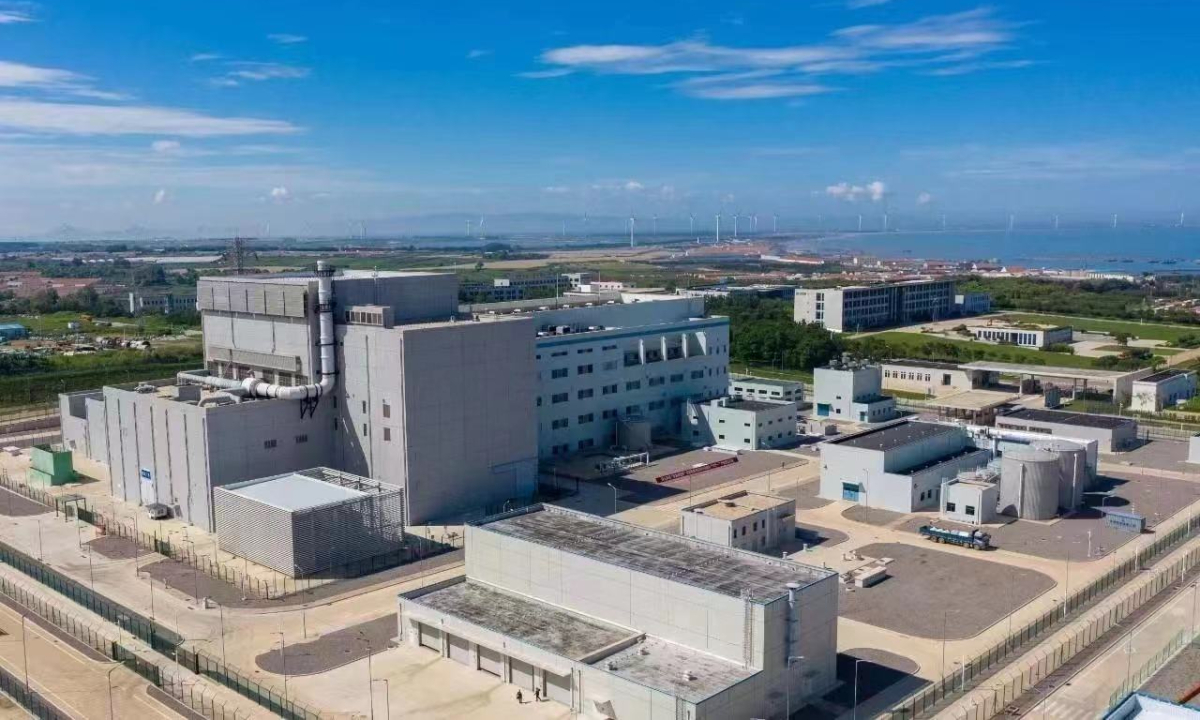
Shidaowan Nuclear Power Plant Photo: Screenshot from the Wechat account of China National Nuclear Corporation
The Shidaowan Nuclear Power Plant in Rongcheng, East China's Shandong Province, which uses a high-temperature gas-cooled nuclear reactor (HTGR), entered commercial service on Wednesday following a 168-hour trial, according to the National Energy Administration (NEA).
It is the world's first fourth-generation (4G) nuclear power plant and uses China's fully independent intellectual property rights, reflecting the nation's global leading position in 4G nuclear power technology, said the NEA.
The HTGR is a globally recognized advanced nuclear reactor, and represents the future direction of the nuclear power industry, said Zhang Zuoyi, chief designer of the project, according to the Xinhua News Agency.
The HTGR will be safe even in the absence of all cooling capabilities and without taking any intervention measures, and accidents such as reactor core meltdowns or radioactive material releases won't happen, Zhang said.
According to the NEA, the Shidaowan Nuclear Power Plant is a commercial demonstration project for HTGR technology.
Experts said the plant's commercial operation will promote the safe development of China's nuclear power industry and innovation ability in related technologies.
Compared with other clean power sources such as solar, wind and hydro, nuclear power is more stable and cost-effective, Lin Boqiang, director of the China Center for Energy Economics Research at Xiamen University, told the Global Times.
While the third-generation nuclear power plants have been deployed in multiple provinces of China and have realized stable profits, the 4th generation nuclear power plant which is at the early and trial application stage will enjoy promising prospects in the future when its construction and operation costs are further reduced, Lin said.
It will largely facilitate China to achieve its carbon emission reduction goal as the safety concern is addressed, Lin noted.
Construction of the plant, with a capacity of 200,000 kilowatts, started in December 2012 by China Huaneng Group Co, Tsinghua University and China National Nuclear Corp. It was first linked to the power grid in December 2021.
The power plant was the collaborative effort of more than 500 companies across the industry chain including design, research and development, construction, component manufacturing and operations management, with the localization rate of equipment exceeding 90 percent.
Based on the construction of the plant, China Huaneng Group Co and Tsinghua University together developed six core technologies, fostered a group of experienced talent and formed a reproducible operation mechanism with independent intellectual property rights, said the Xinhua News Agency's report.
Amid China's effort in achieving carbon emission reduction goals, the installed capacity of the renewable energy power generation nationwide reached a new high, exceeding 1.4 billion kilowatts by the end of October, reaching 1.404 billion kilowatts, an increase of 20.8 percent year-on-year, accounting for about 49.9 percent of the country's total installed capacity of power generation.
From January to October 2023, China's installed power generation capacity hit 2.81 billion kilowatts, up 12.6 percent year-on-year. The capacity of nuclear power stood at 56.76 million kilowatts, up 2.2 percent year-on-year, accounting for about 2 percent of all power generation capacity, NEA data showed.




